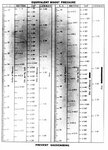michael rauls
Tech Sergeant
- 1,679
- Jul 15, 2016
There were at least 3 RAAF units still flying P40s out of the northern tip of Italy on VE day. The 450th the " desert harassers" is the one I remember off the top of my head but there were at least 2 more and I have read there were a few others but not 100% sure about those. I think Italy qualifies as Europe.I dunno. All this effort on behalf of the P-40 has me starting to think it is overrated.
The P-40 never served in front line units in the ETO, certainly not throughout the war.
P-36s served in the Battle of France, but not after that in the ETO.
The Spitfire was a very near contemporary of the P-36 (first flight less than a year later) and it also served to the end of the war.
And, generally speaking, it didn't seem that the P-40 was ever rated as highly as the Spitfire.
Yes I would rate the Spitfire as a better fighter of the same aproxamite vintage but that doesn't mean the Hawk wasn't a remarkable plane considering the timeframe of it's introduction. It means that the Spit was remarkable and then some.
The p40 did have a few advantages that were important in some theatres for some missions but yes if the p40 was a great design considering its vitage ( and I think it was)then even more so the Spitfire. I would agree with that but dont think it takes away from the p40 at all.

